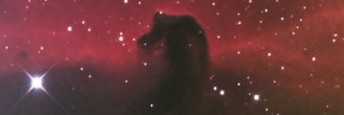The 16" carbon newton.
|
After the observatory was actually fitted quite well with the 12" newton in the last 5 years. But now it was finally time for a new telescop! This time I decided to give all the important parts like the mirror cell, tube etcetera to be made of carbon fiber composite material in which a temperature change has an negative affect on the optics. The device was designed with the comuter til the last detail before construction because a wrong sized carbon part can quickly top the budget. In contrast to the first telescope that I had just be finished quickly, I now had an emphasis for design and a good handling. On this page I illustrated shortly the development of the telescope. |
||
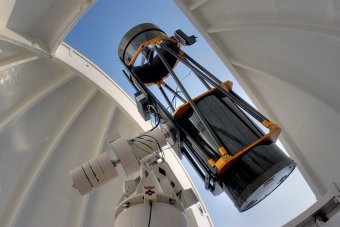 |
In October 2011 I was finally able to install the new 405mm telescope with 1690mm focal length. It was designed for photographic purposes, but it is also suitable for visual observations. The telescope has an open truss tube design made of carbon and can capture twice light quantity than the previous telescope.
The first test image: click here |
|
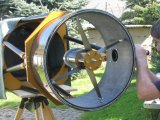 |
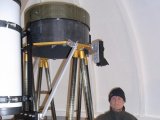 |
The first tests on the artificial star and first light on 22/10/2011. It was a rare dark and moonless night and we could never tire of looking at unprecedented richness of detail in the night sky. |
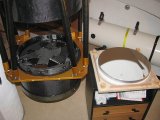 |
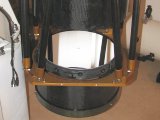 |
The great moment: The telescope is installed on the mount and the last step is the installation of the primary mirror. |
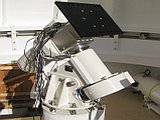 |
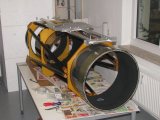 |
Now was the mount quickly adapted and built on an adjustable mounting mechanism on the tube. |
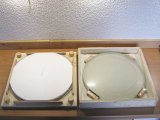 |
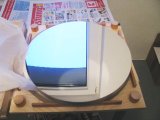 |
After I tested the mirror at a real star in the tube the mirror was ready to ship for aluminizing. A wonderfully homogeneous surface without the smallest scratch. Just like NEW! |
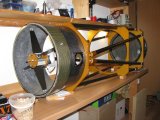 |
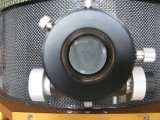 |
left: For the first time I could admire the completely assembled tube in full size A look into the focuser reveals - there must not much to do to adjust. |
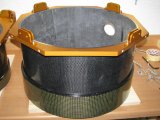 |
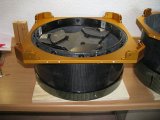 |
The upper and lower telescop parts. |
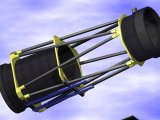 |
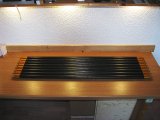 |
left: The telescope in 3D CAD right: 8 carbon pipes with glued, anodized fittings. |
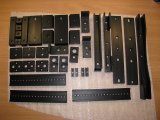 |
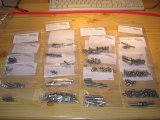 |
left: The first parts are back from anodize lelft: I hope I remember where the screws all belong ... ;) |
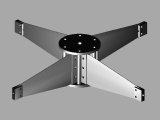 |
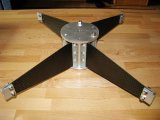 |
The spider in the computer model and in original done. The frames are only one millimeter thick and made of carbon fiber. It is nice to hold the parts in my hands when previously only knew virtually. |
 |
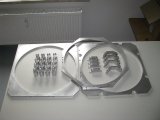 |
left: The aliminium boards are 500mm x 500mm x 15mm and must be milled around exactly right. We did it! The finished telescope connectors lie on the table. |
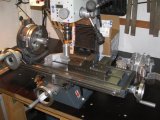 |
 |
left: Some of the finished milled parts ... Right: milling at the pipe connector. |
 |
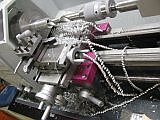 |
All connectors are made of aluminum. Lathing of the 16 connector for the carbon fiber pipes. |
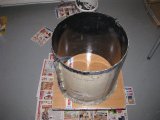 |
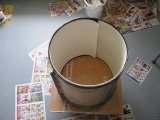 |
The finished form of glass fiber composite. Right is being adapt the Non-woven honeycomb. Non-woven honeycomb is used between the carbon fiber mats as sandwich material. |
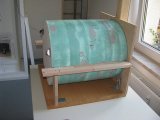 |
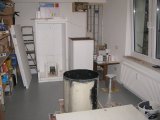 |
I require three tube parts with an exact inside diameter of 480mm. Therefor of course must a form to be built. Left: The blank from which the mold will built. Right: The finished form with the temper oven in the background. |
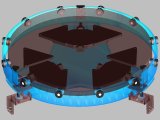 |
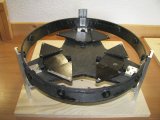 |
The mirror cell as a 3D CAD design and the original part carbon fiber composite material. It's always amazing how stable and light this material is. Disadvantage: Incredibly labor-intensive! |
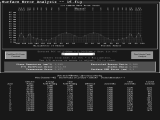 |
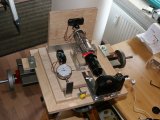 |
After about five months, the mirror was finished. The very good measured datas were then confirmed by the company AstroOptic W.Rohr one year later. Right, a Foucault tester that repeatedly delivers amazingly accurate results. |
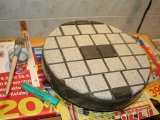 |
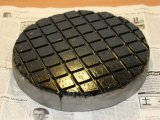 |
These are two of the grinding and polishing tools in condition as new. 300mm diameter. With about 10 kg weight sometimes degenerated the polishing process out into working... |
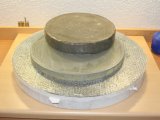 |
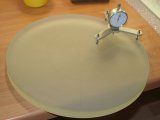 |
The sphere comes by its correct sphere radius and is evenly distributed over the surface. |
 |
 |
It all started with a borosilicate blanc of Corning. 405mm in diameter and only 28mm thick. It has established to abrasive cutting the sphere in the blank. |



